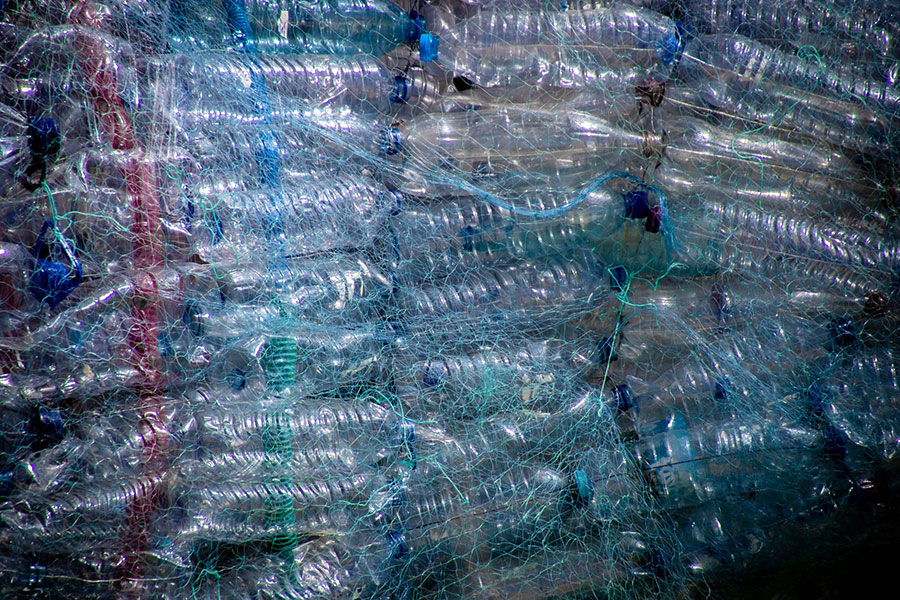
The Climate Change Commission (CCC) calls for banning of non-essential and single-use plastics as part of enforcing ambitious targets to reduce greenhouse gas (GHG) emissions from all sectors.
The Commission said that the problem on plastics is not only a waste or pollution issue, but also a climate issue. Plastics become an essential component of products and packaging due to its durability, lightweight, and low cost. Despite its numerous benefits, plastics originate as fossil fuels and emit GHGs which worsens the climate.
According to the “Plastic & Climate: The Hidden Costs of a Plastic Planet” released by the Center for International Environmental Law (CIEL), GHGs are emitted at each of the stages of the plastic lifecycle: 1) fossil fuel extraction and transport, 2) plastic refining and manufacture, 3) managing plastic waste, and 4) plastic’s ongoing impact once it reaches oceans, waterways, and landscape.
The extraction and transport of fossil fuels to create plastic produces GHG through methane leakage and flaring, fuel combustion and energy consumption in the process of drilling for oil or gas, and through land disturbance when forests and fields are cleared for well pads and pipelines. Even plastic refining also produces emissions.
Plastics that are landfilled, recycled, or incinerated also produce emissions. While landfilling plastics emits the least, it, in turn, presents other significant risks, like on health and on the environment. Recycling has moderate emissions. Incineration is the primary driver of emissions from plastic waste management.
Unmanaged plastic ends up in the environment, where it continues to have climate impacts as it degrades. Plastics at the ocean’s surface, coastlines, riverbanks, and landscapes continually release methane and other GHGs, and that these emissions increase as plastic breaks down further.
Microplastic in the oceans also interfere with the ocean’s capacity to absorb and sequester carbon dioxide. Microscopic plants and animals play a critical role in the biological carbon pump that captures carbon at the ocean’s surface and transports it into the deep oceans, preventing it from re-entering the atmosphere. Around the world, these plankton are being contaminated with microplastic. Plastic pollution reduces the ability of phytoplankton to fix carbon through photosynthesis. It also reduces the metabolic rates, reproductive success, and survival of zooplankton that transfer the carbon to the deep ocean.
The report also expressed that the plastic industries’ plans to expand plastic production threaten to exacerbate plastic’s climate impacts and could make limiting global temperature rise to 1.5°C impossible.
“If the production, disposal, and incineration of plastic continue on its present growth trajectory, by 2030, these global emissions could reach 1.34 gigatons per year—equivalent to more than 295 five-hundred-megawatt coal plants. By 2050, plastic production and incineration could emit 2.8 gigatons of CO2 per year, releasing as much emissions as 615 five-hundred-megawatt coal plants,” the report stated.
To avoid overshooting the 1.5°C target, the report suggested to aggregate global greenhouse emissions within a remaining (and quickly declining) carbon budget of 420–570 gigatons of carbon.
“But if the growth in plastic production and incineration continues as predicted, the cumulative greenhouse gas emissions by 2050 will be over 56 gigatons CO2e, or between 10–13 percent of the total remaining carbon budget. By 2100, exceedingly conservative assumptions would result in cumulative carbon emissions from plastic of nearly 260 gigatons, or well over half of the carbon budget,” the report added.
With this data, the CCC is highly concerned with the problems of plastic, especially at the local scale. The climate body said that the most effective way to address the plastic crisis is to dramatically reduce the production of unnecessary plastics, beginning with national and global bans on nearly all single-use and disposable ones.



















